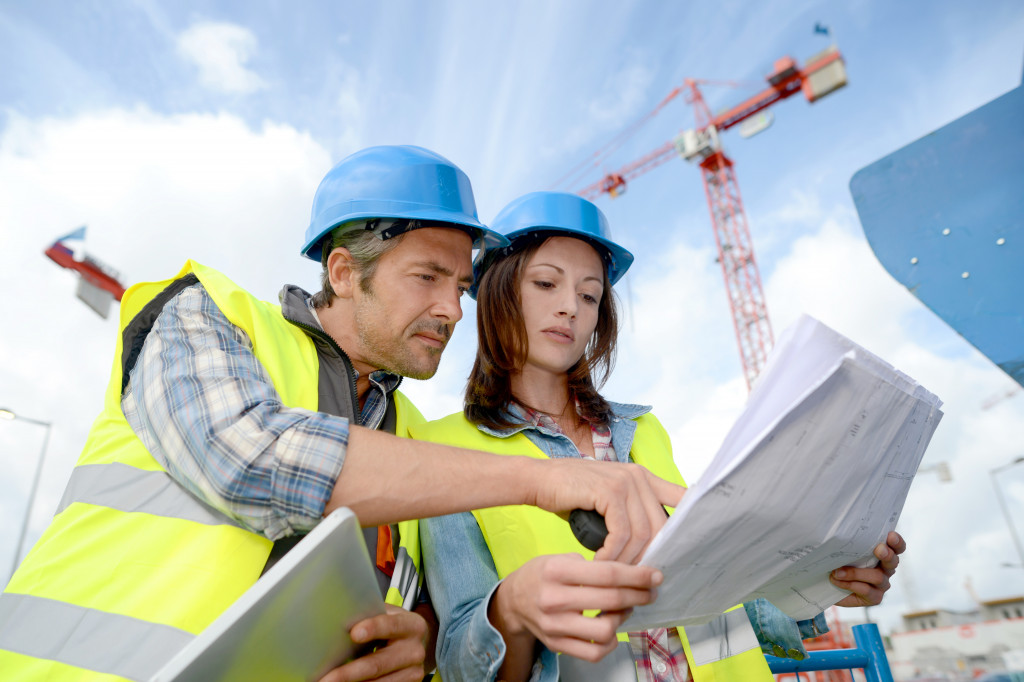Construction sites are dangerous places. There are heavy machinery, tools, and materials everywhere, and workers are constantly moving around, so it’s no wonder that accidents happen all the time. In fact, construction is one of the most dangerous industries in the world. That’s why taking safety seriously on construction sites is so important. Following some simple tips, you can make your construction site much safer for your workers. Here are some tips to get you started:
1. Enforce Safety Rules
The first step to making your construction site safer is to enforce safety rules. You should have a set of rules that all workers must follow and ensure that everyone on site knows what those rules are. Post the rules in a visible site location, and review them with your workers regularly. Some important safety rules to consider:
- No horseplay on site.
- Always wear proper personal protective equipment (PPE).
- Follow all posted signs and warnings.
- Never work alone.
- Report any unsafe conditions to a supervisor immediately.
By enforcing these and other safety rules on your construction site, you can help prevent accidents from happening.
2. Use Proper Lifting Techniques
Another way to make your construction site safer is to ensure that workers lift materials correctly. Improper lifting can lead to musculoskeletal injuries, so it’s important to train workers on proper lifting techniques, such as keeping the object close to the body and using their leg muscles instead of their back muscles.
It’s also important to provide lifting assistance when necessary, such as using lifting blocks to help lift heavy materials. When in doubt, it’s always better to ask for help or use machinery to lift materials rather than trying to do it alone and risking injury.
3. Regularly Inspect Equipment and Tools
It’s crucial to regularly inspect all equipment and tools on your construction site, ensuring they are in proper working order and safe to use. This includes not only big machinery but also smaller hand tools. Make sure to fix or replace any damaged equipment or tools immediately. Here are some other tips for safe equipment usage:
- Only use equipment and tools that you have been trained to operate.
- Follow the manufacturer’s instructions for use and maintenance.
- Keep work areas clear of debris and clutter, as this can lead to accidents with machinery or tripping hazards.

4. Provide Training and Resources
Another way to make your construction site safer is to provide training and resources for your workers. Every worker on site should know how to safely use the tools they’re working with and how to stay safe while working. You can provide this training by holding regular safety meetings and having information available on-site that workers can refer to when needed.
Additionally, you should ensure that your workers have access to the resources they need to stay safe. This includes things like PPE, first aid kits, and fire extinguishers. By ensuring your workers have what they need to stay safe, you can help prevent accidents on-site.
5. Regularly Assess Risks
It’s important to regularly assess risks on your construction site. This can be done by conducting a risk assessment or having safety inspections with the entire team. Identifying potential hazards and finding ways to address them can make your construction site much safer for everyone. Here are some things to consider when assessing risks:
- Is there any tripping or slipping hazards on-site? Can they be fixed by keeping the area clear of debris or marking uneven surfaces?
- Are there proper measures to control hazardous materials, such as chemicals or asbestos?
- Is heavy machinery being operated correctly and safely? Are workers properly trained to operate the machinery?
No construction site can ever be complete without risk, but by regularly assessing and addressing potential hazards, you can significantly improve the safety of your construction site.
6. Have an Emergency Response Plan
In case of an emergency, it’s important to have a plan in place for how to respond. This includes knowing who to contact for medical assistance and having first-aid kits readily available on-site. It also includes evacuation plans in case of fires or other dangerous situations.
Ensure all workers are aware of the emergency response plan and know what to do in an emergency. Practice drills can also help ensure that everyone knows how to respond in a real emergency situation.
Construction sites are dangerous places, but there are steps you can take to make them safer for your workers. By enforcing safety rules, providing training and resources for your workers, and inspecting equipment regularly, you can help prevent accidents and keep your construction site safe.



